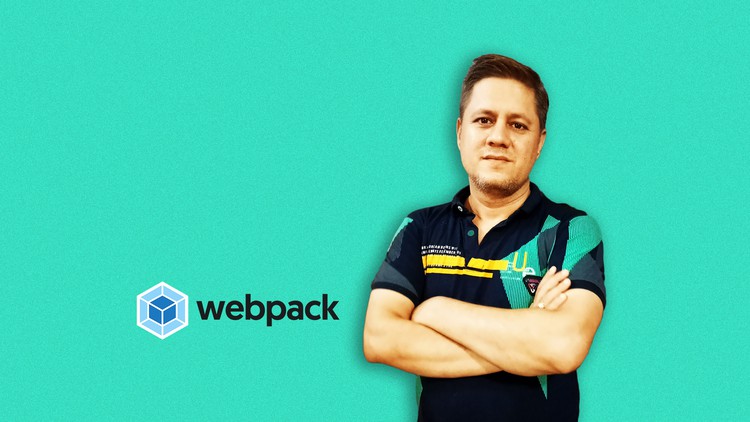
Power of webpack in 2 hours
What you will learn
Viewers will learn the use of webpack
Use of webpack with Micro front end
Viewers will learn how to parse Typescript using loaders
Viewers will learn how to compile the SCSS files
Viewers will learn will be able to create 2 different micro front ends and connect them
Description
Learn how to optimize your React JS application using Webpack and implement a scalable Micro-Frontend UI Architecture. In this comprehensive Udemy course, you will gain hands-on experience and practical knowledge to enhance your development skills.
Files Minification
Bundling
Compressing Images
Parsing SCSS files
Parsing React Code using babel loader to plain javascript
Implementing micro front ends using different front end programming languages
Webpack Configuration
Eslinting using webpack
Course Highlights:
- Introduction to Webpack:
- Understand the role of Webpack as a module bundler for JavaScript applications.
- Explore Webpack configuration files, loaders, and plugins to optimize your development workflow.
- Learn how to bundle and optimize your React JS application using Webpack.
- React JS Fundamentals must be already aquired by viewer :
- Gain a solid foundation in React JS concepts and syntax.
- Learn how to build reusable components and manage state using React Hooks.
- Understand the React component lifecycle and how to handle events and data flow.
- Micro-Frontend UI Architecture:
- Discover the benefits and principles of Micro-Frontend UI Architecture.
- Learn how to break down your React JS application into micro-applications for better modularity and scalability.
- Implement communication and sharing of data between micro-applications using shared libraries or frameworks.
- Integrating Webpack with React JS:
- Explore the integration of Webpack with React JS for efficient module bundling.
- Configure Webpack to optimize your React JS application’s performance and loading speed.
- Apply code splitting techniques to lazy load components and improve initial load times.
- Implementing Micro-Frontends with React JS:
- Dive into the practical implementation of Micro-Frontends using React JS.
- Learn how to create independent micro-applications and integrate them into a single cohesive user interface.
- Explore techniques to handle routing, state management, and cross-micro-application communication.
- Testing and Deployment:
- Discover strategies for testing your React JS application and micro-applications.
- Understand best practices for deployment and hosting of Micro-Frontend UI Architecture.
- Learn about continuous integration and continuous deployment (CI/CD) pipelines for efficient development workflows.
- Real-World Projects and Examples:
- Apply your knowledge to real-world projects and work on hands-on exercises.
- Gain practical experience in building scalable React JS applications with Micro-Frontend UI Architecture.
- Get guidance and insights from the instructor through detailed explanations and code demonstrations.
By the end of this course, you will have a strong foundation in using Webpack with React JS and be able to implement a Micro-Frontend UI Architecture for scalable and modular web applications. Enroll now and take your React JS skills to the next level!
Content